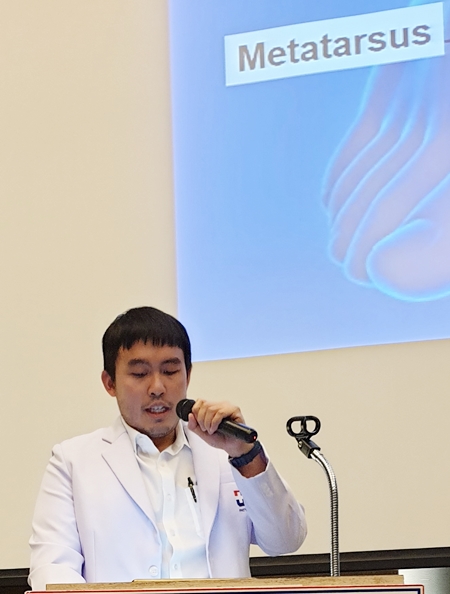
Dr. Tanarat Hempongphan, MD, spoke to the Pattaya City Expats Club (PCEC) on Sunday, March 1, on the topic of: Avoiding and Overcoming Foot Pain and Problems. Dr. Tanarat is an Orthopedic Surgeon at Bangkok Hospital Pattaya who specializes in foot and ankle surgery.
Dr. Tanarat received his Doctorate of Medicine from Chulalongkorn University, Bangkok, in 2013 and completed his internship at Queen Savang Vadhana Memorial Hospital, Sriracha, in 2014, and his residency there in 2018. He is certified by the Thai board of Orthopedic Surgery. He has completed a Visiting Fellowship in Clinical and Research Institute for Foot and Ankle at Jujo Hospital, Chiba, Japan. He has also given several presentations related to his specialty.
He began by showing pictures of the main bones of the ankle and foot. He then mentioned that there were three common ankle and foot problems; ankle sprains, heel pain and gastrocnemius tightness (better known as cramps or a Charlie Horse). He further divided foot problems into two main categories, trauma and disease. He primarily focused his talk on trauma problems.
Ankle and foot trauma are mostly caused by vehicle accidents or strenuous sports activities. The most common injuries are fractures and Achilles ruptures. These may be minor and require little surgery or significant requiring restructuring apparatus or in more serious cases, surgery.
Ankle sprains are quite common and can be either trauma based or disease related. There are three levels of sprains depending on the damage to the stretched ligament. Level 3 sprain is a severed ligament and will require surgery. When asked how long one should endure ankle pain while waiting for self-healing to occur, his answer was 3 months. If the problem is not relieved in that time, he said there is probably a more serious underlying problem.
The preferred method of treatment for most injuries are the use of orthopedic devices, considered the conservative medical approach. These could be over the counter insoles, custom made insoles or custom made footwear. The latter is the most expensive. The doctor did not recommend high arch insole shoes for arch correction.
For most foot problems that require surgery, minimally invasive surgical techniques can usually correct the problem, which is Dr. Tanarat’s specialty. He said this method causes the least trauma, blood loss and minimizes the recovery time.
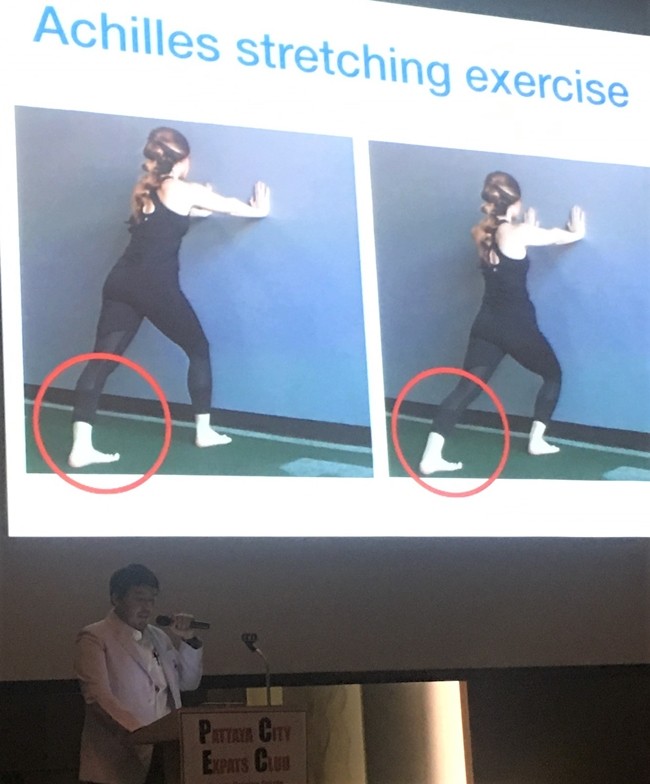
Sprains that are chronic may be disease related. Other disease related problems he touched on included chronic ankle instability, acute arthritis, certain lesions, and stress fractures. Some other disease problems he mentioned are hallox vagus deformity (abnormal deviation of the big toe away from the midline of the body or toward the other toes of the foot), plantar heel pain, flat feet and bunions.
He also gave come pointers on how to avoid foot injuries. He noted that one should warm up properly with stretching exercises and use the proper footwear for the situation. He also recommended exercises to strengthen the Achilles tendon.
The doctors take home suggestions were these: 1. Know when to go to the doctor for ankle sprains (if the pain is acute and walking is impossible or after 3 months with no change in condition), 2. Incorporate self-stretching exercises into your routines, 3. Use proper footwear for the activity and 4. If surgery is necessary utilize the minimally invasive if available.
After the presentation, the MC brought everyone up to date on the upcoming club events and others of interest. This was followed by the Open Forum where questions are asked and answered about Expat living in Thailand, especially Pattaya. For more information about the PCEC, visit their website at: www.pcec.club. The PCEC’s YouTube channel has videos of this and other presentations as well as post presentation interviews of the speaker. You can use Google or other search engine to find “pcec youtube channel” to view the videos.
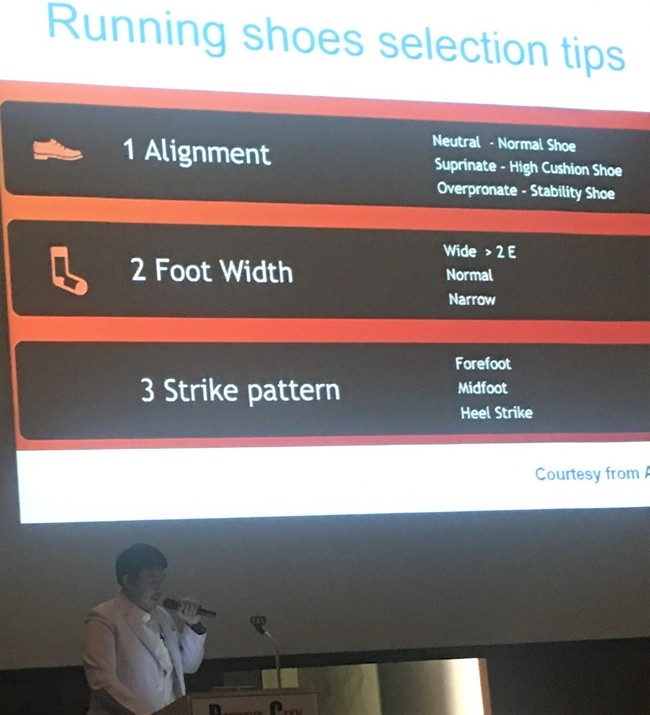
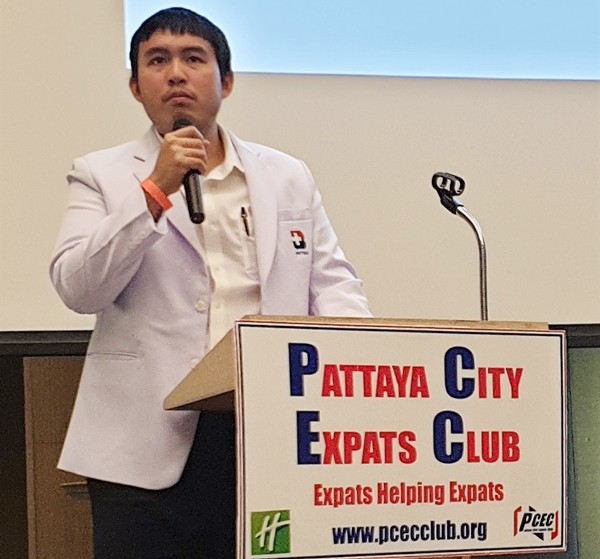
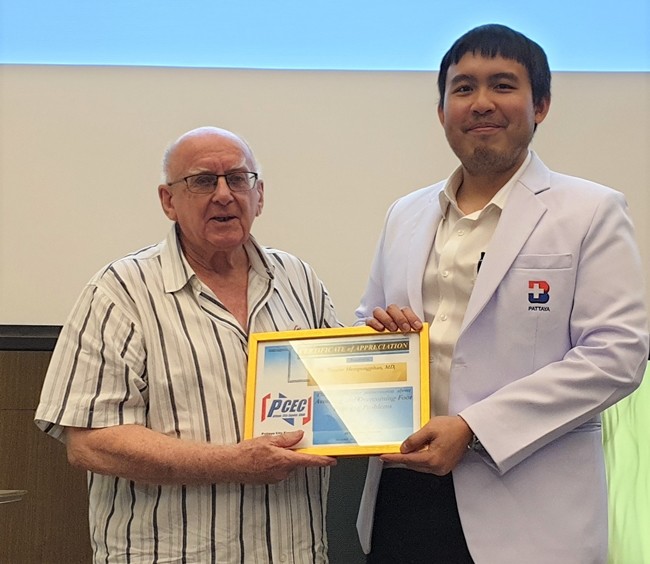
 |
 |
 |





